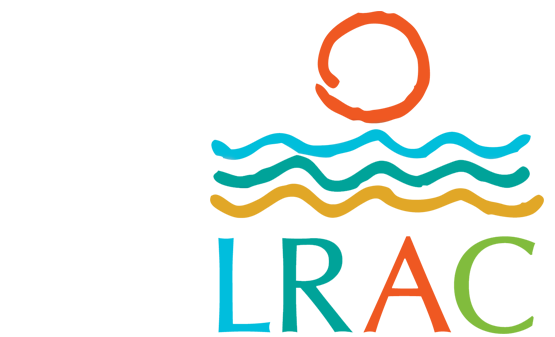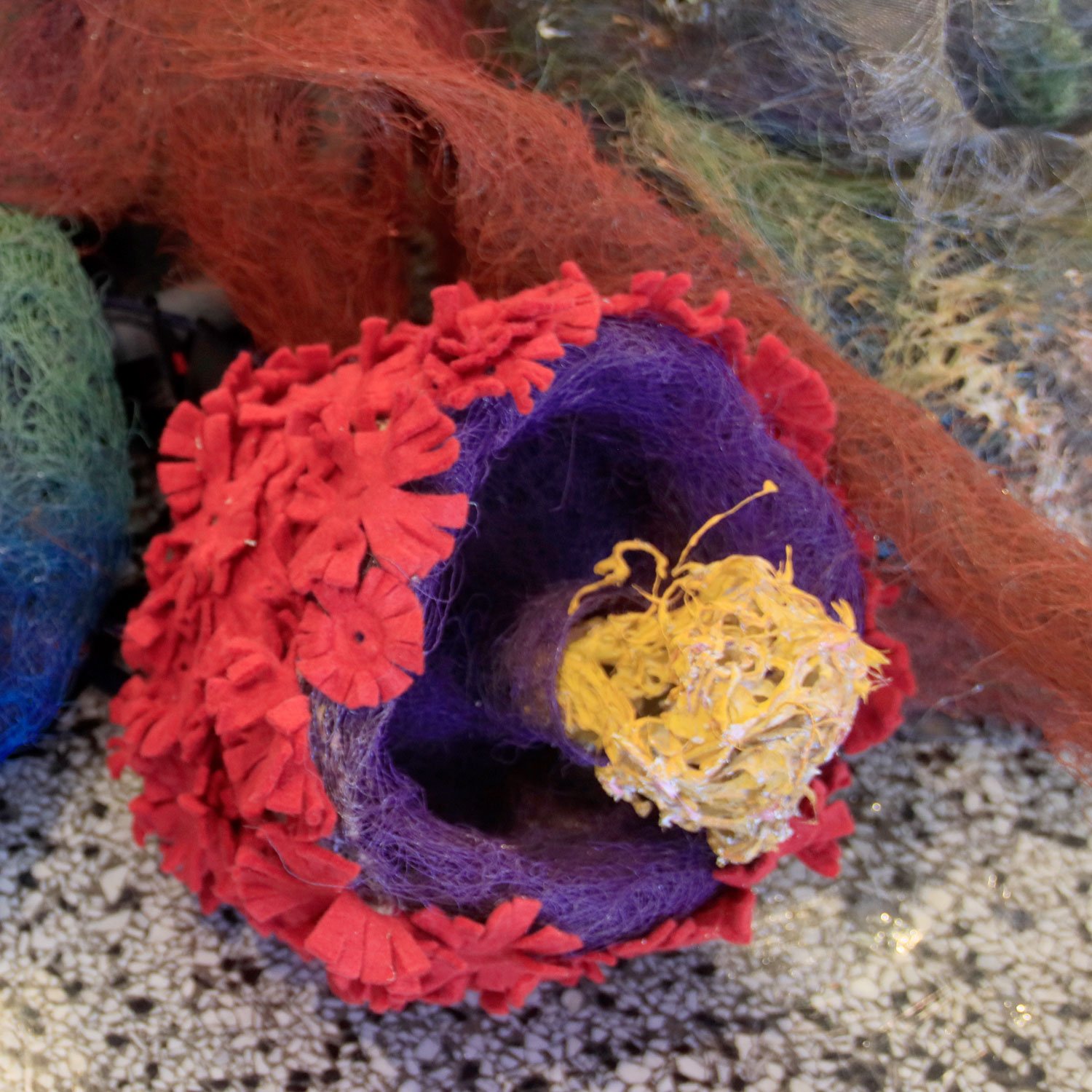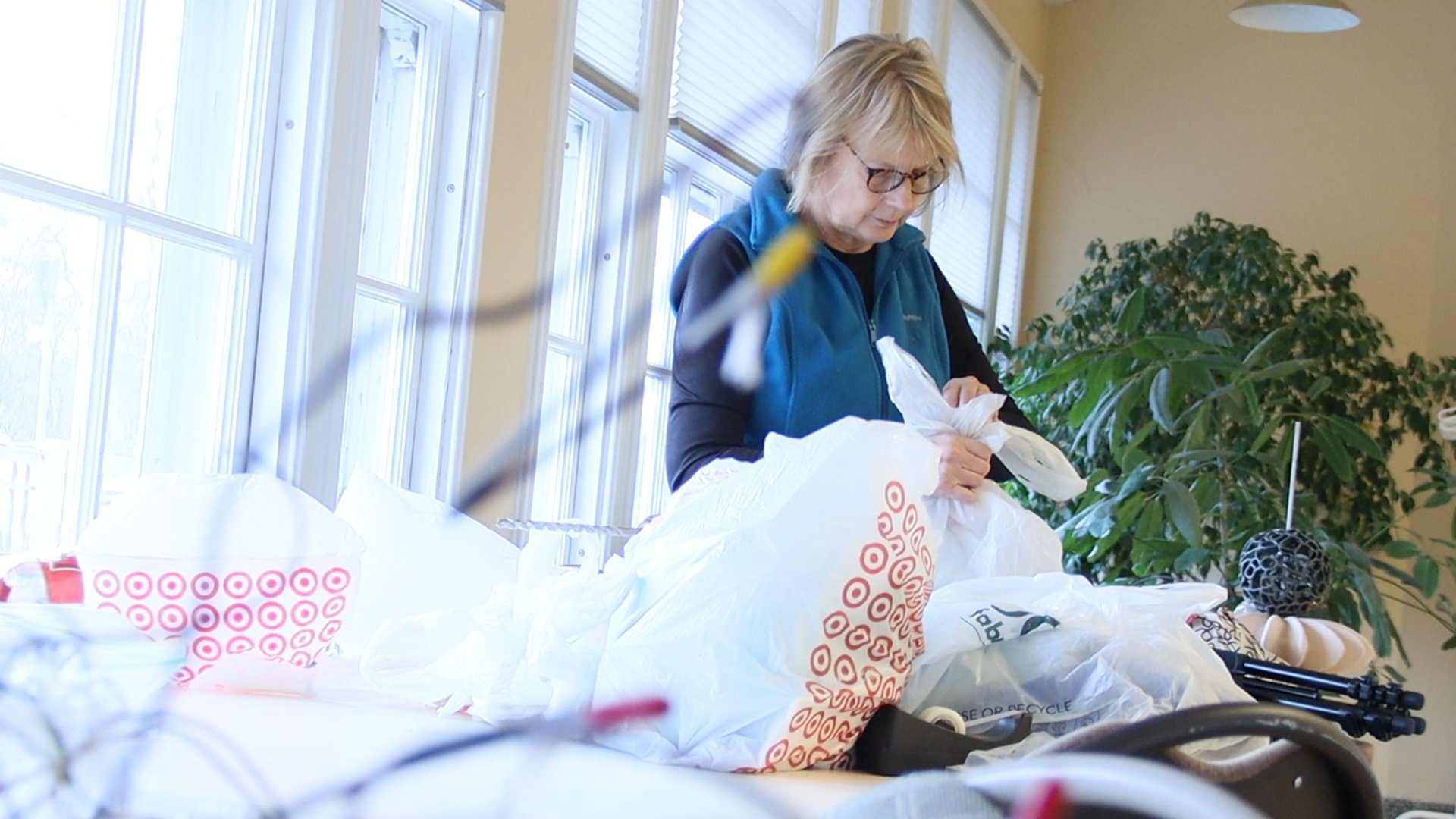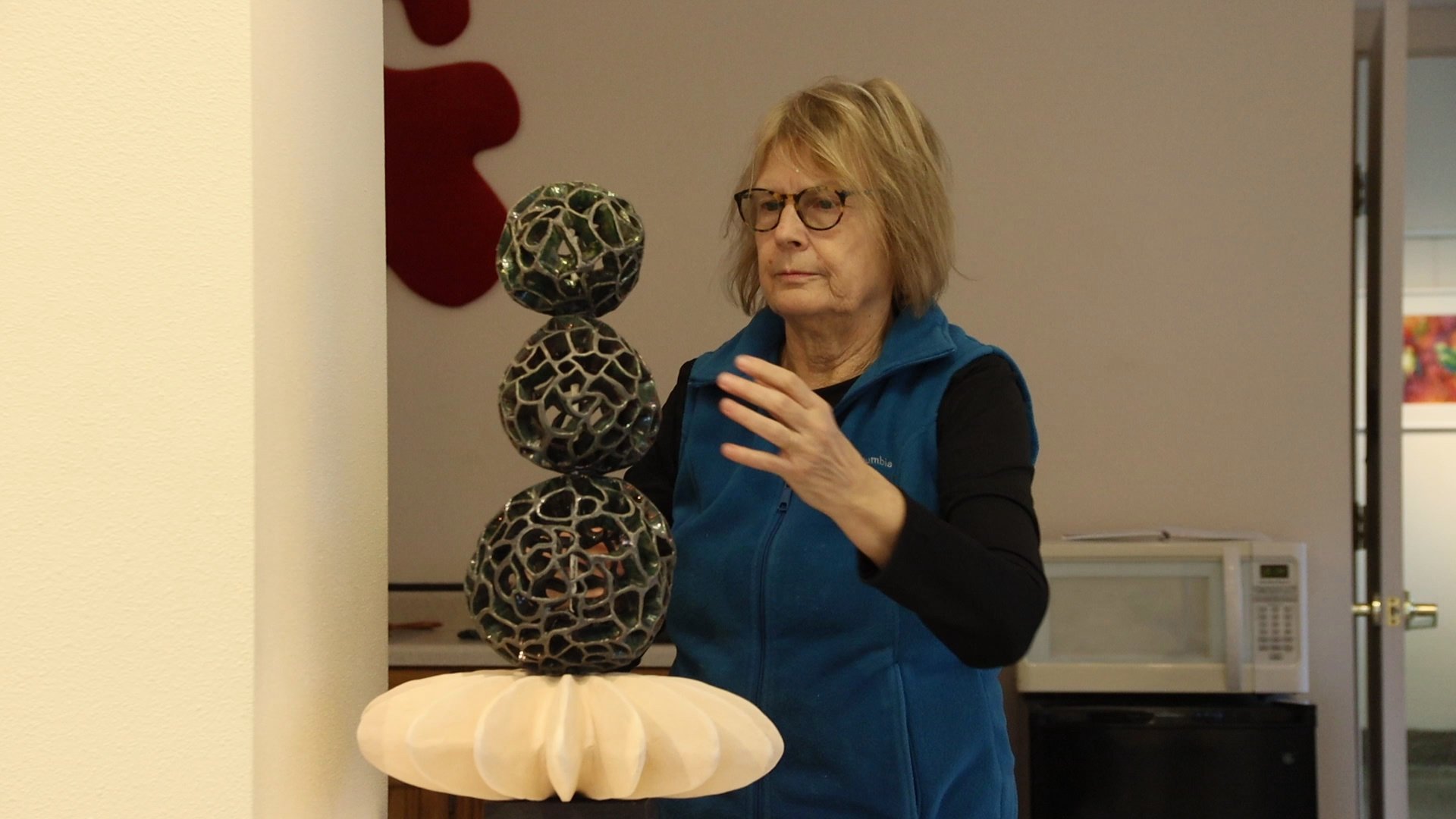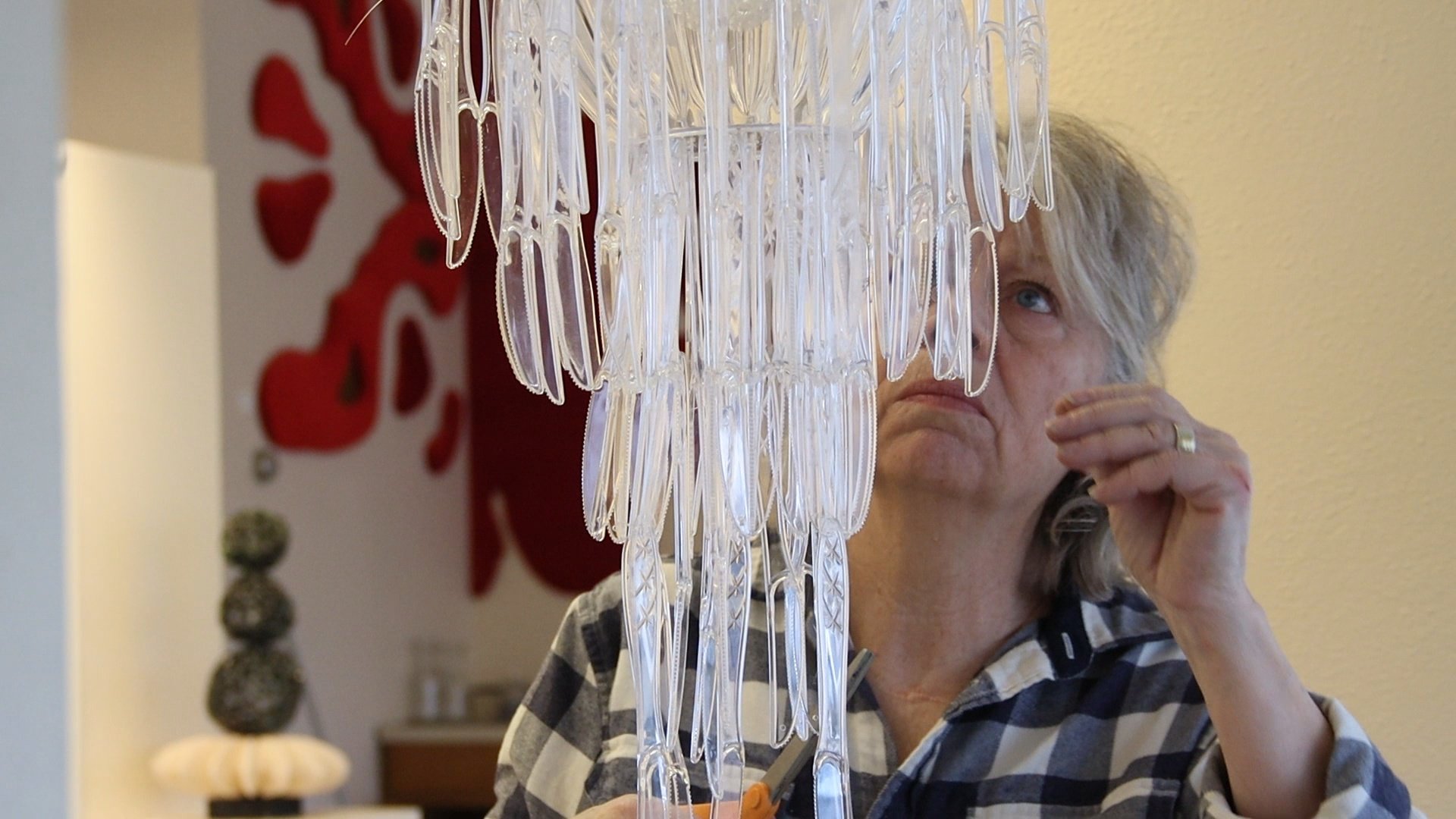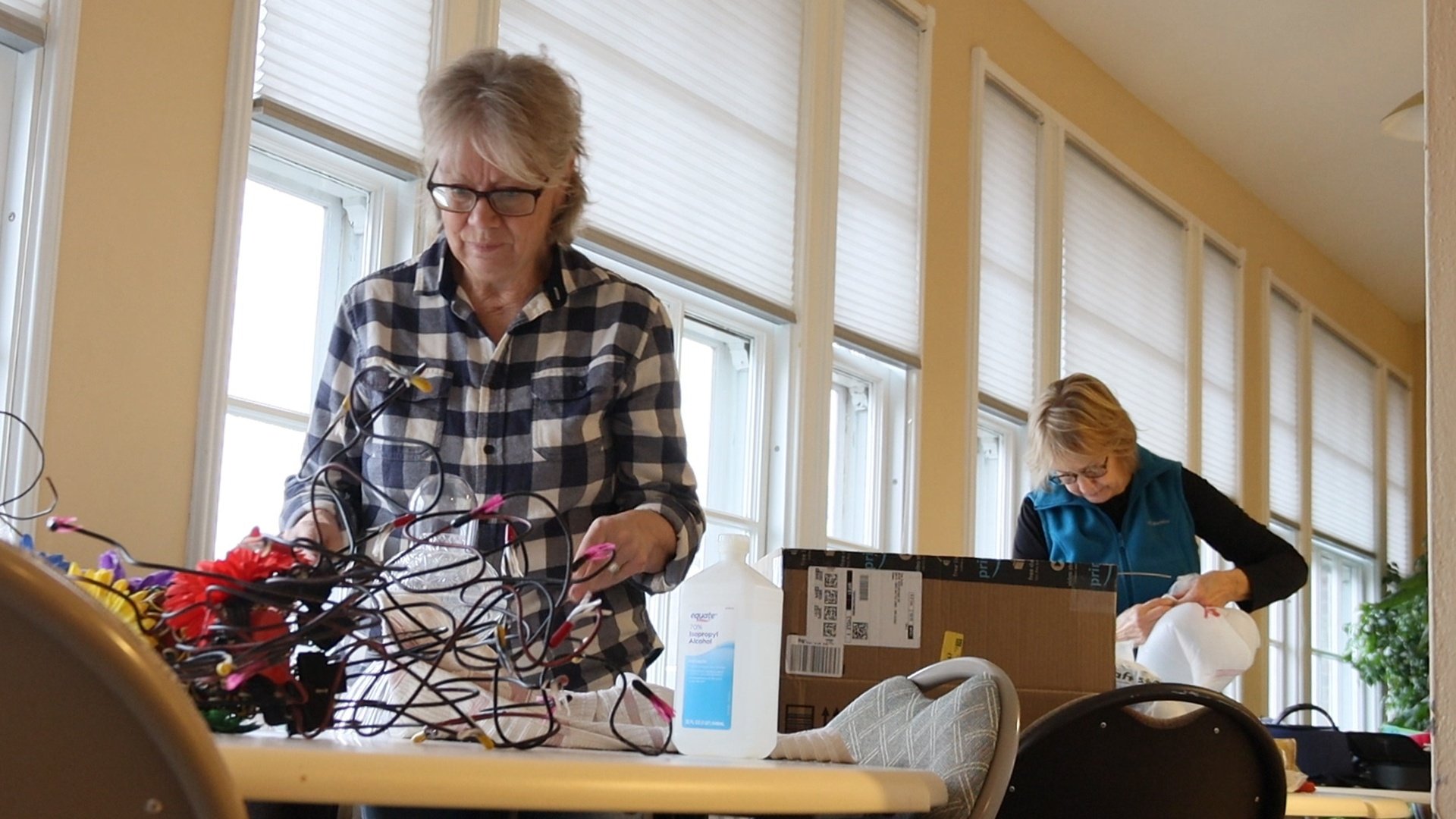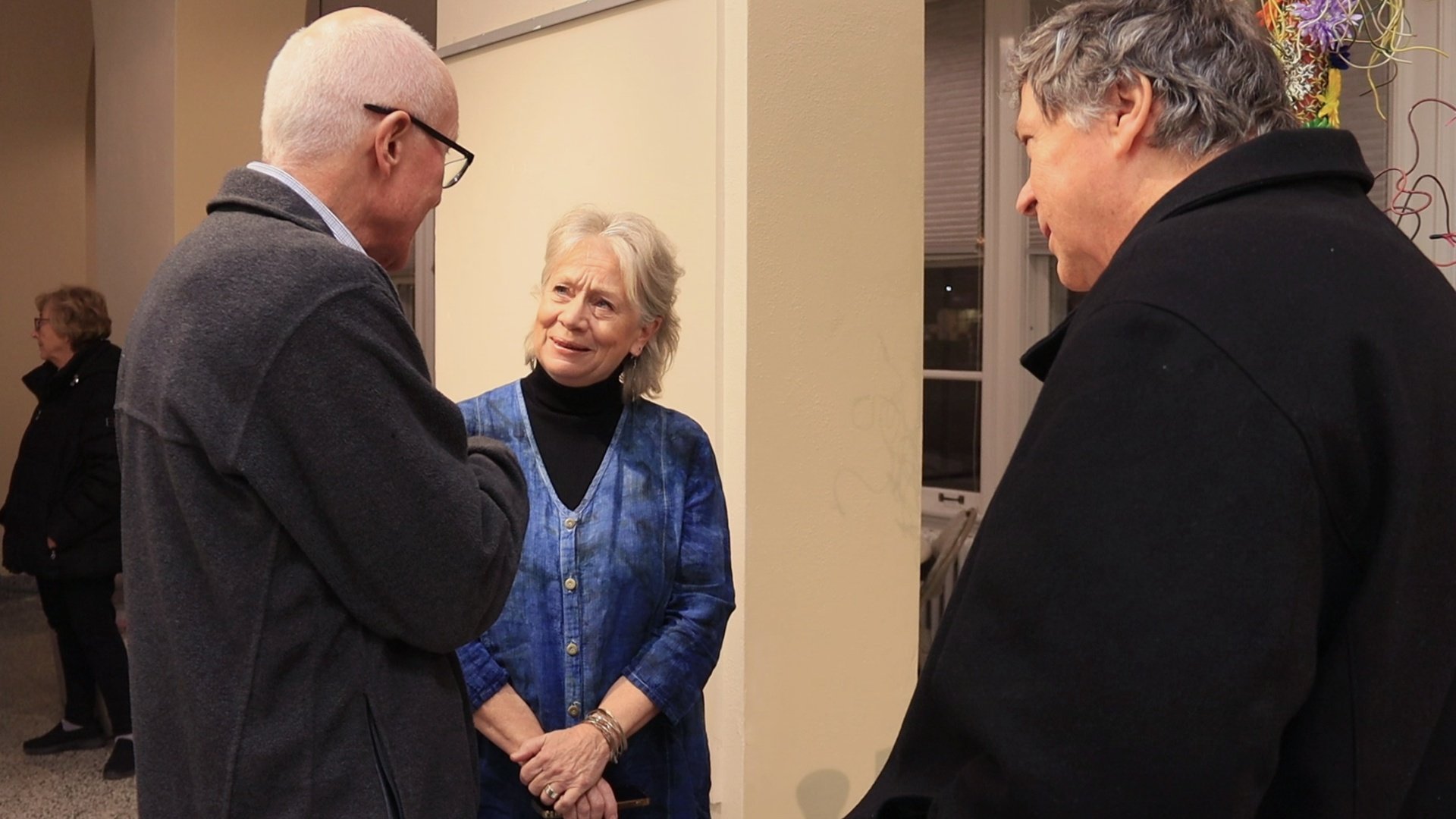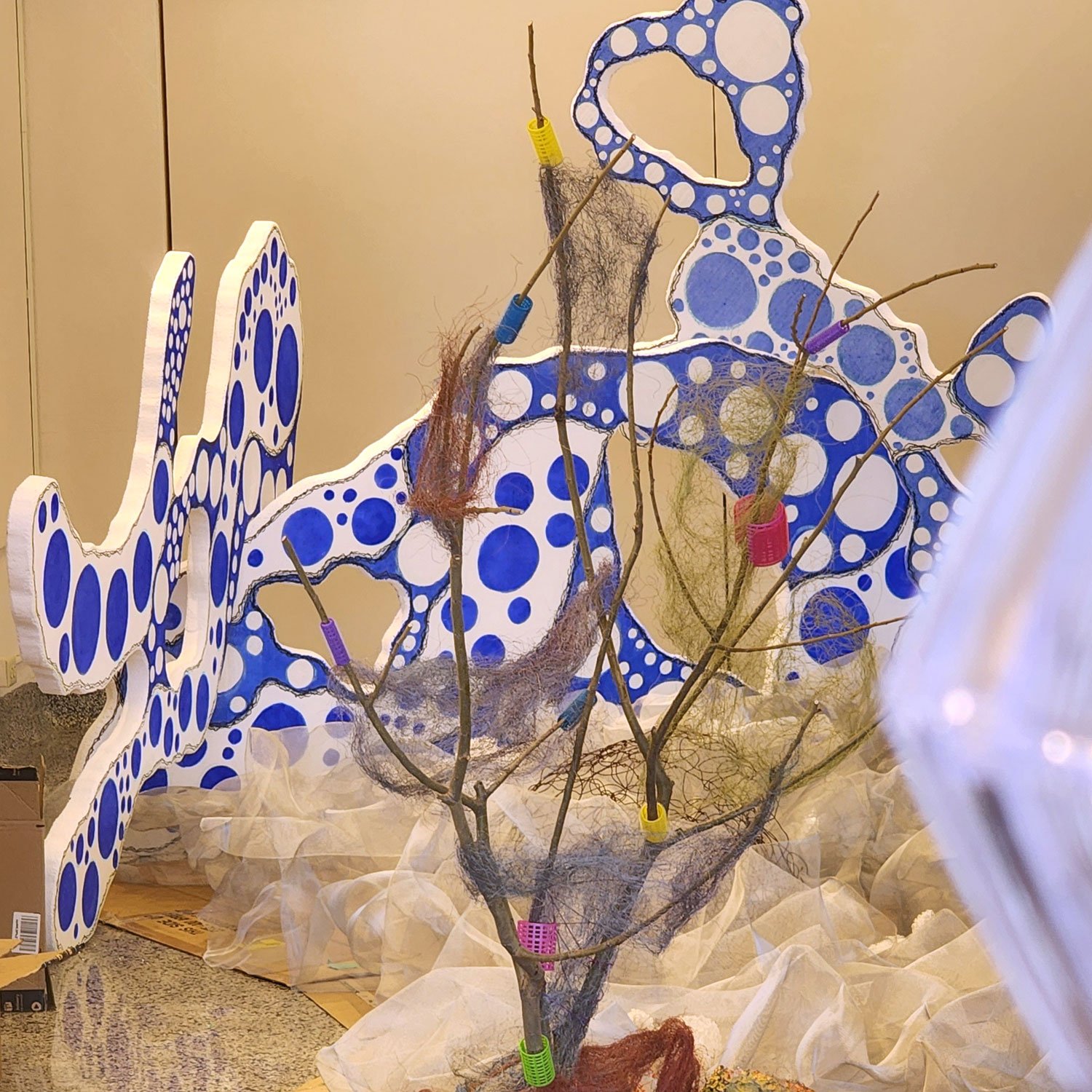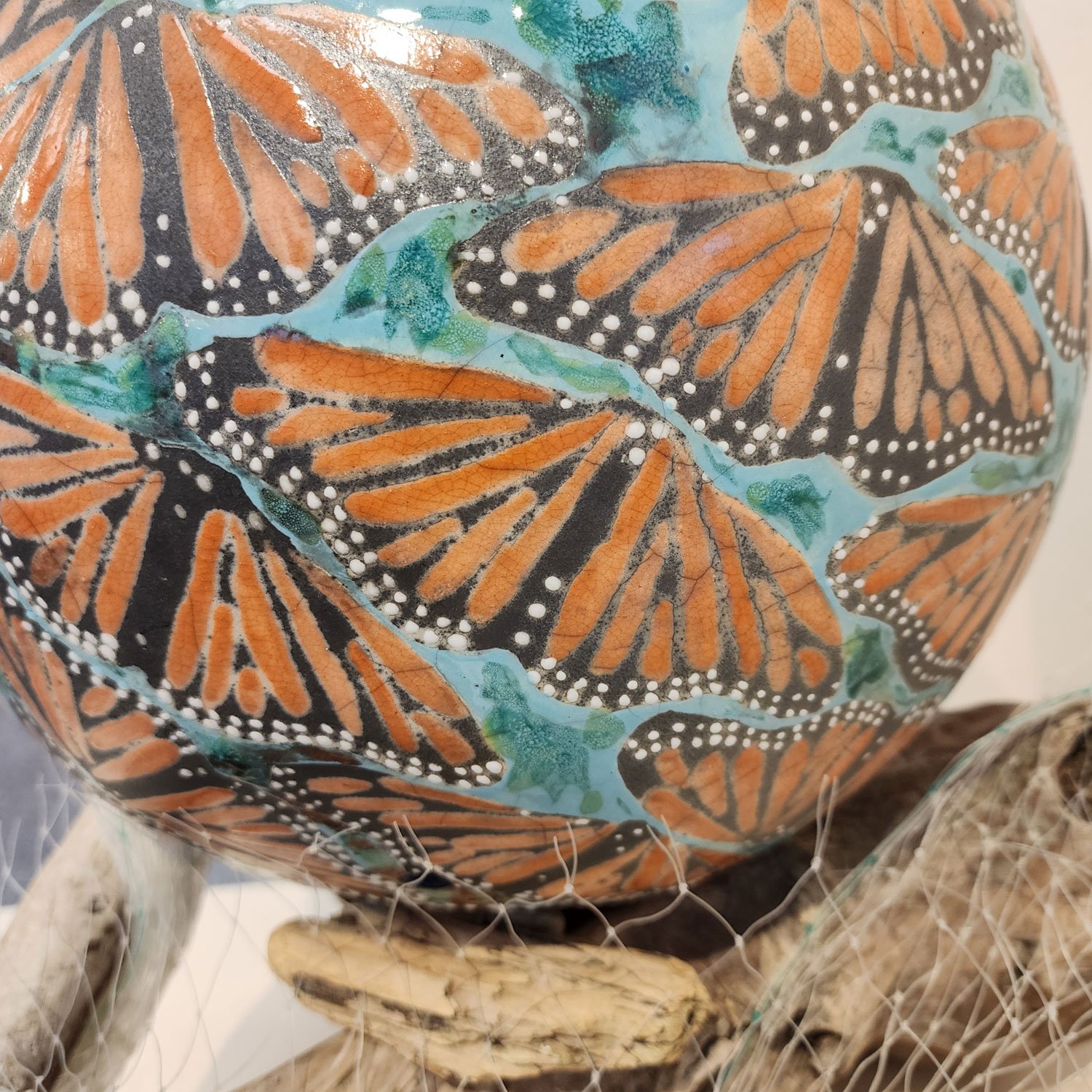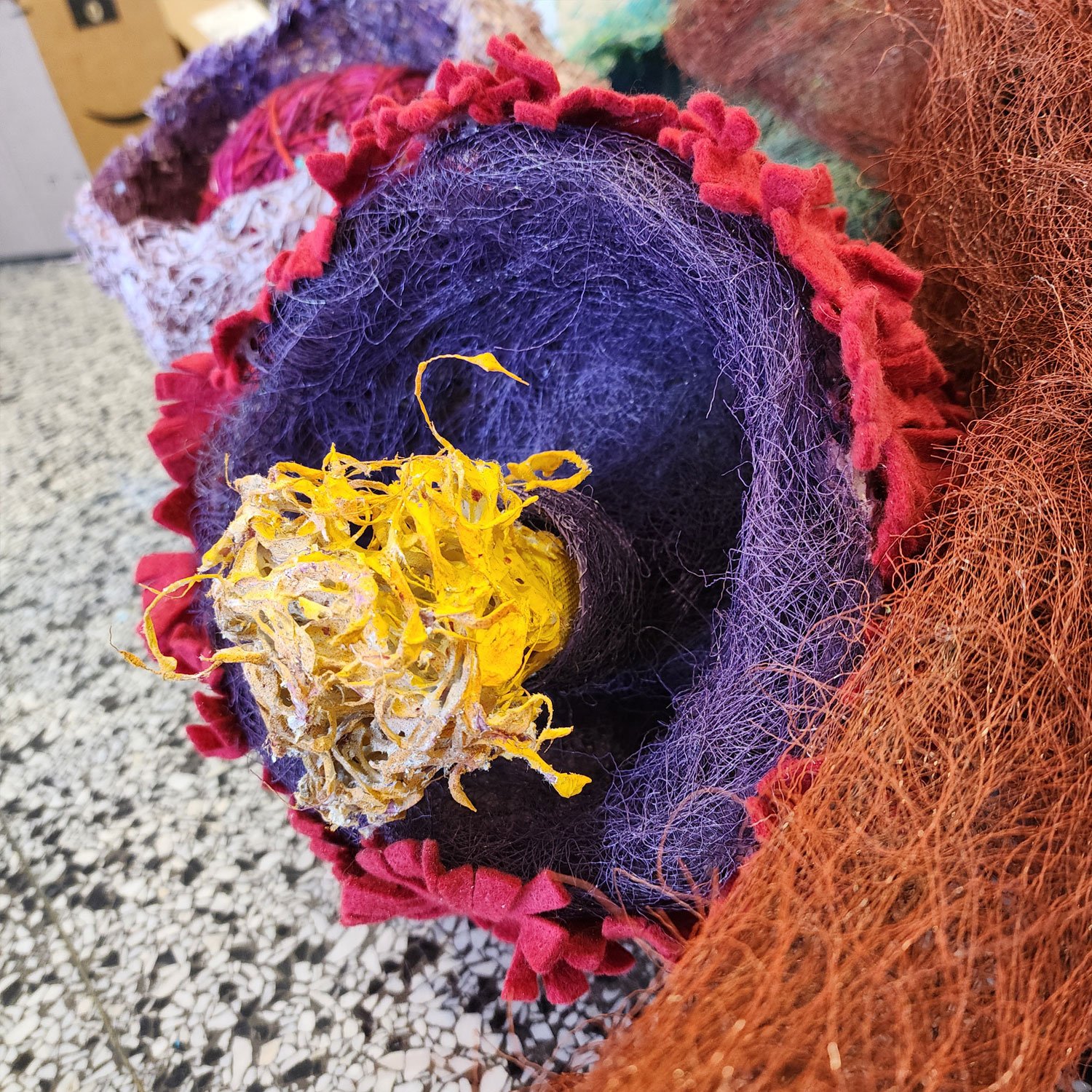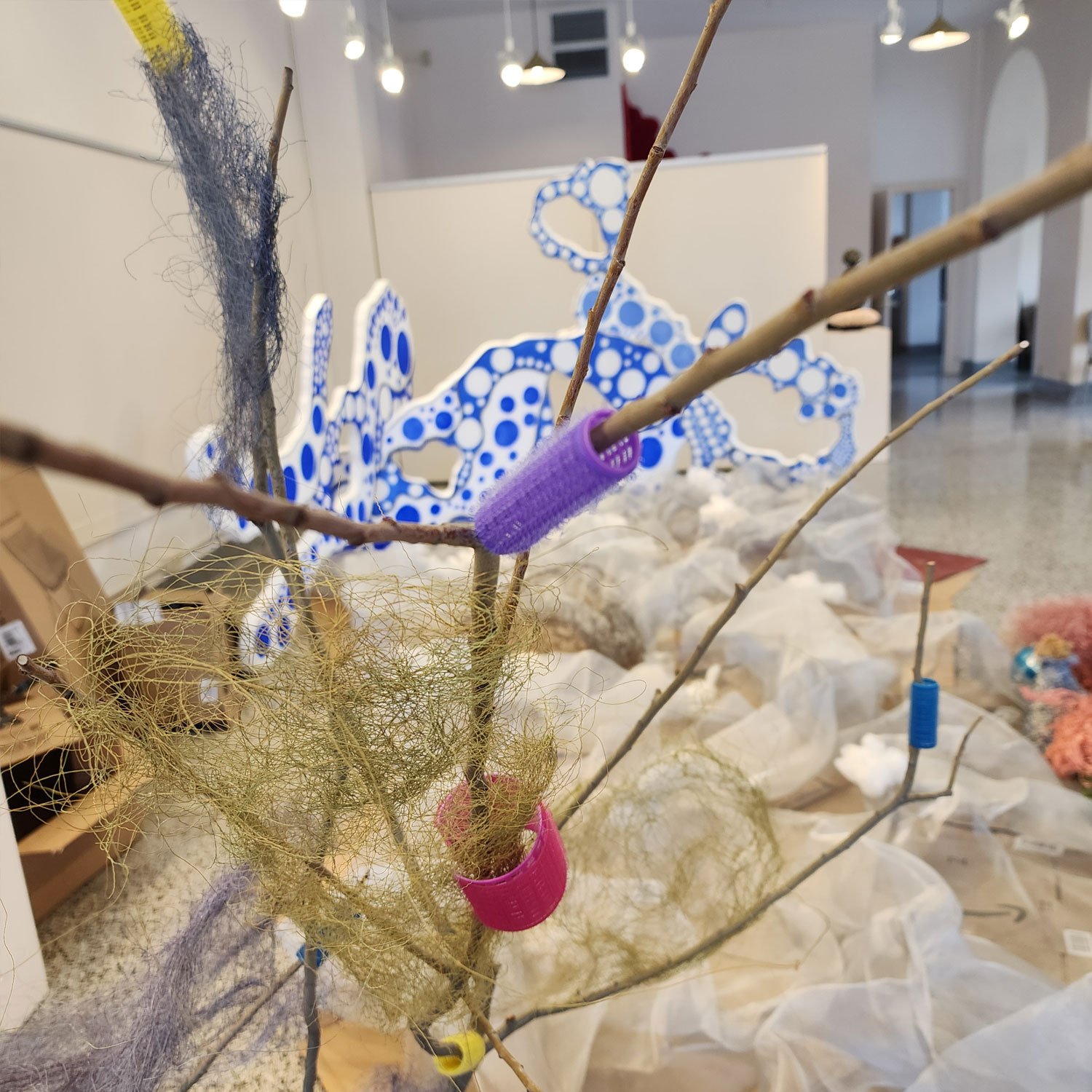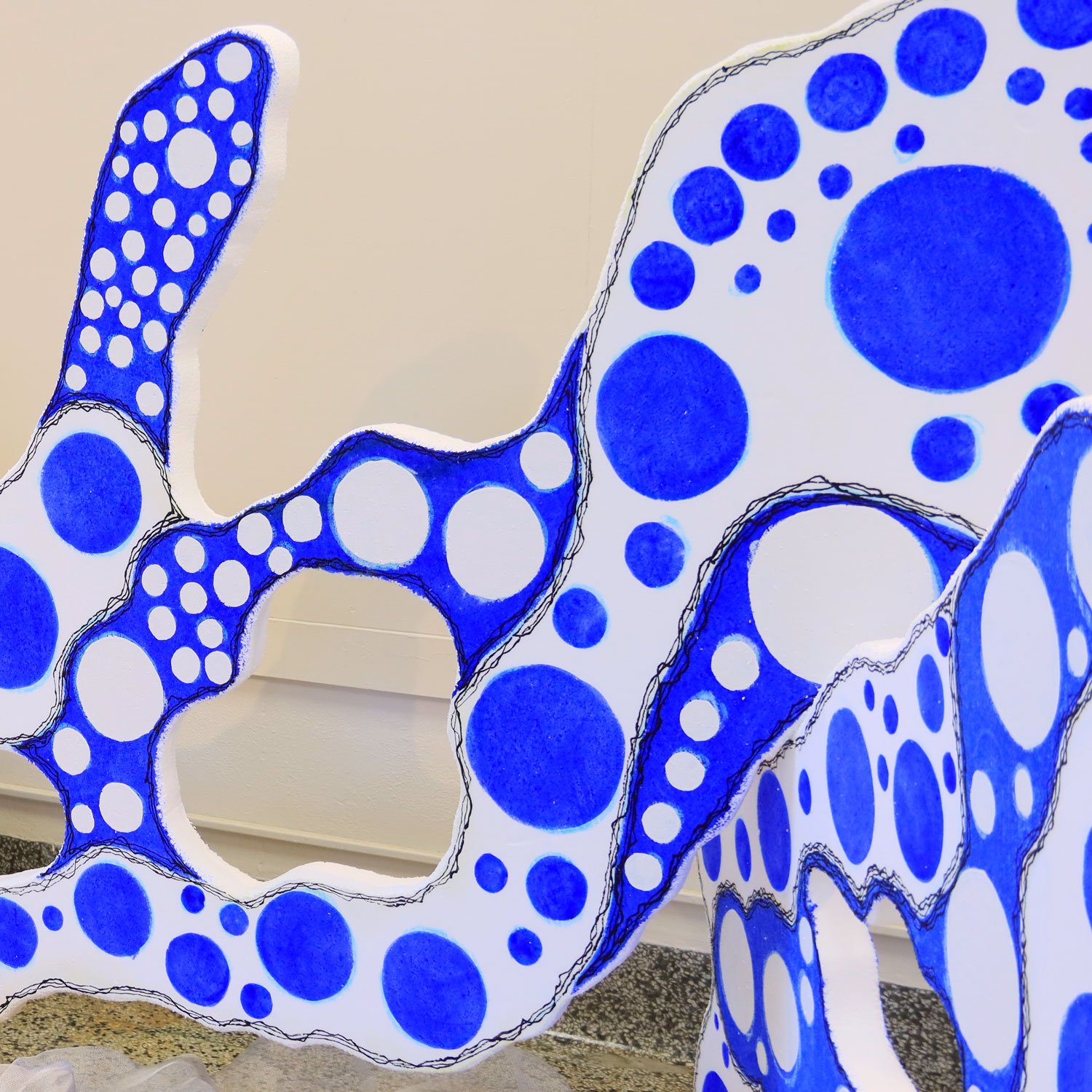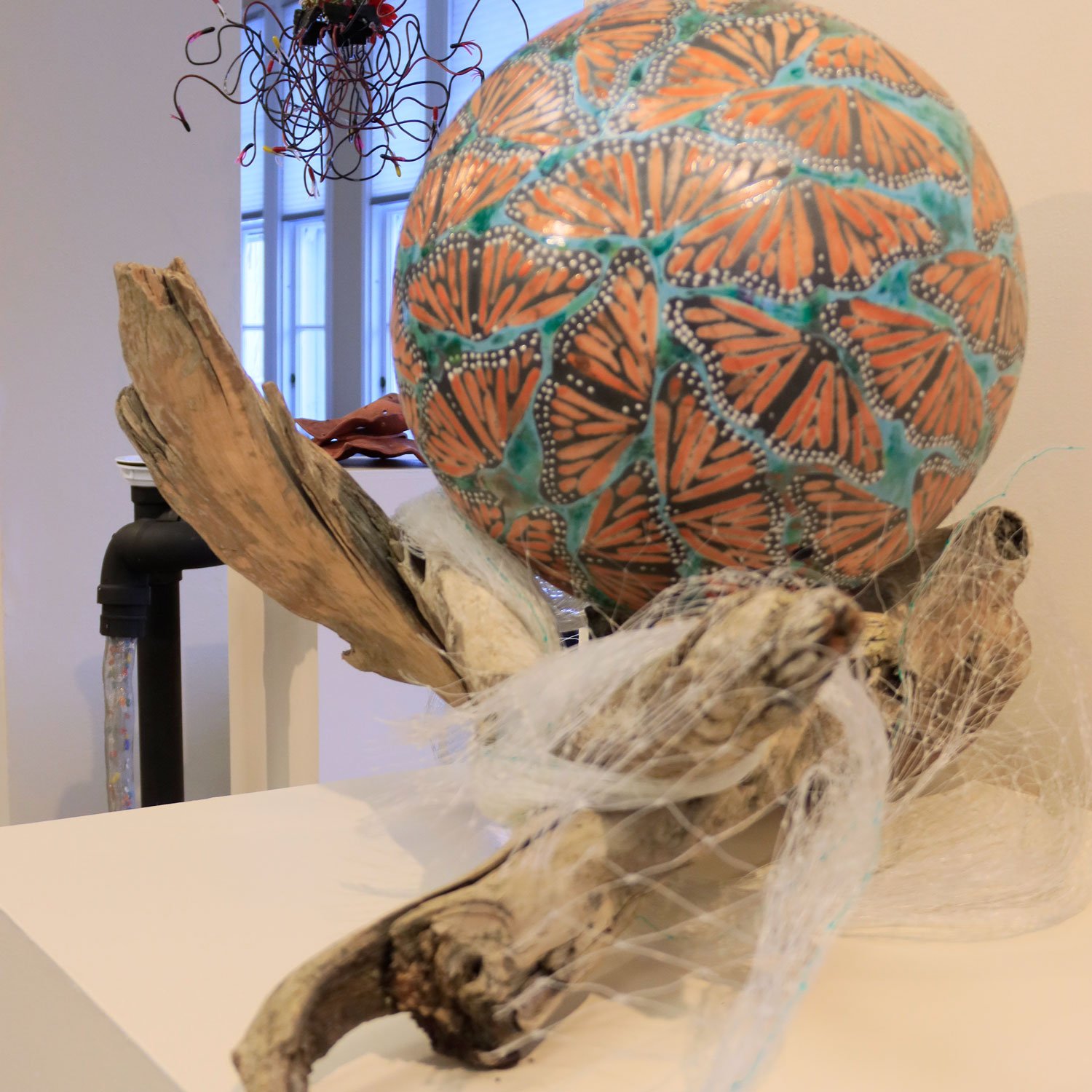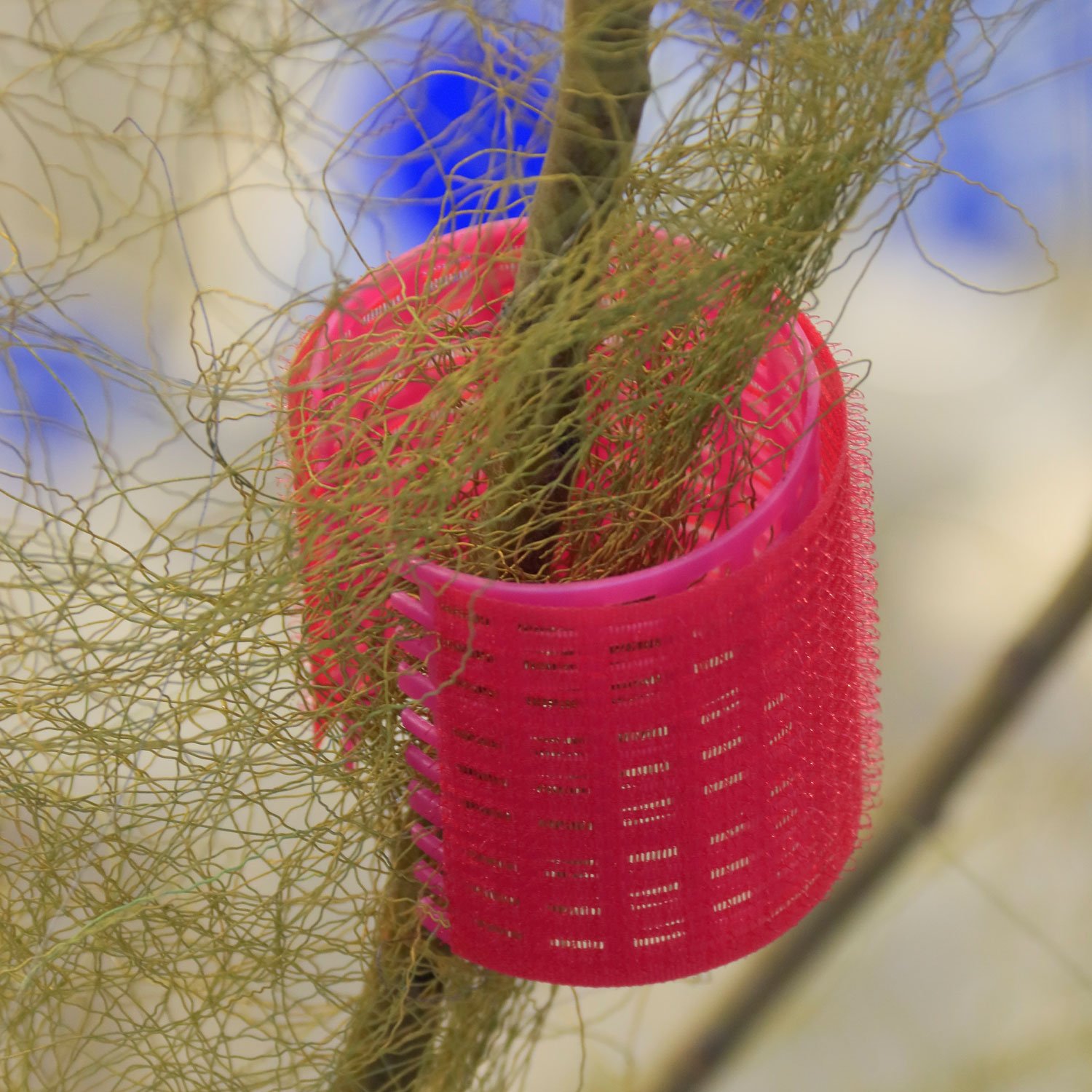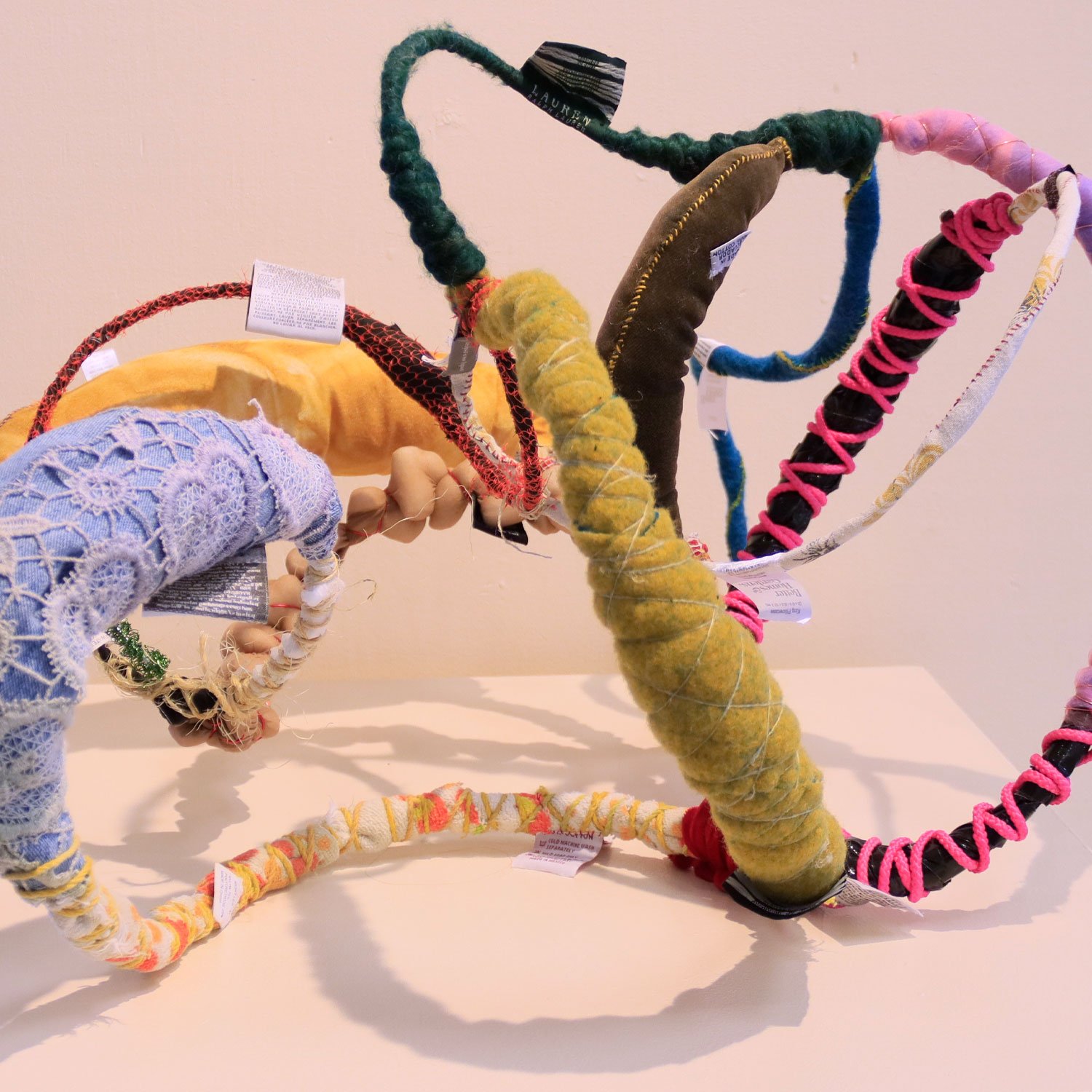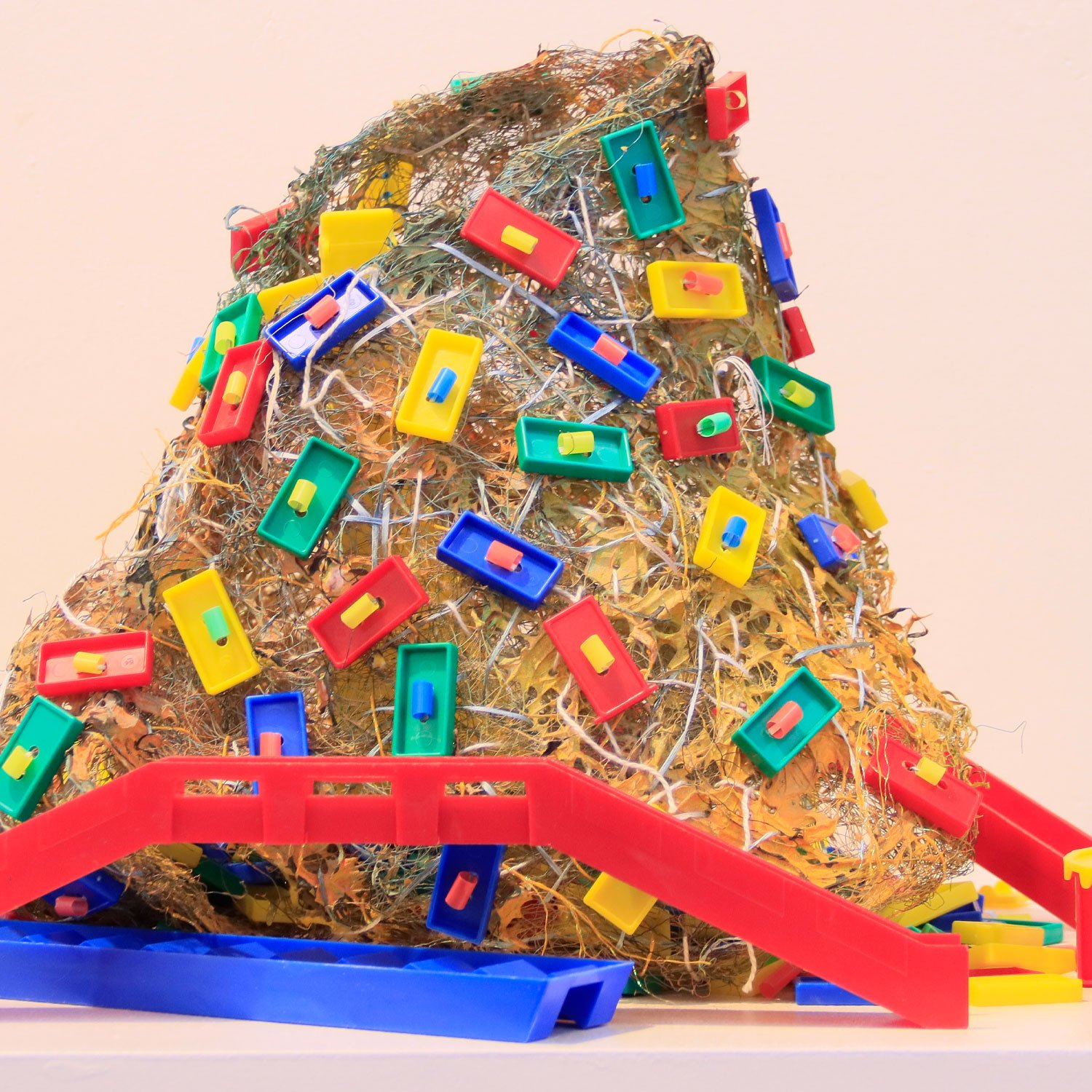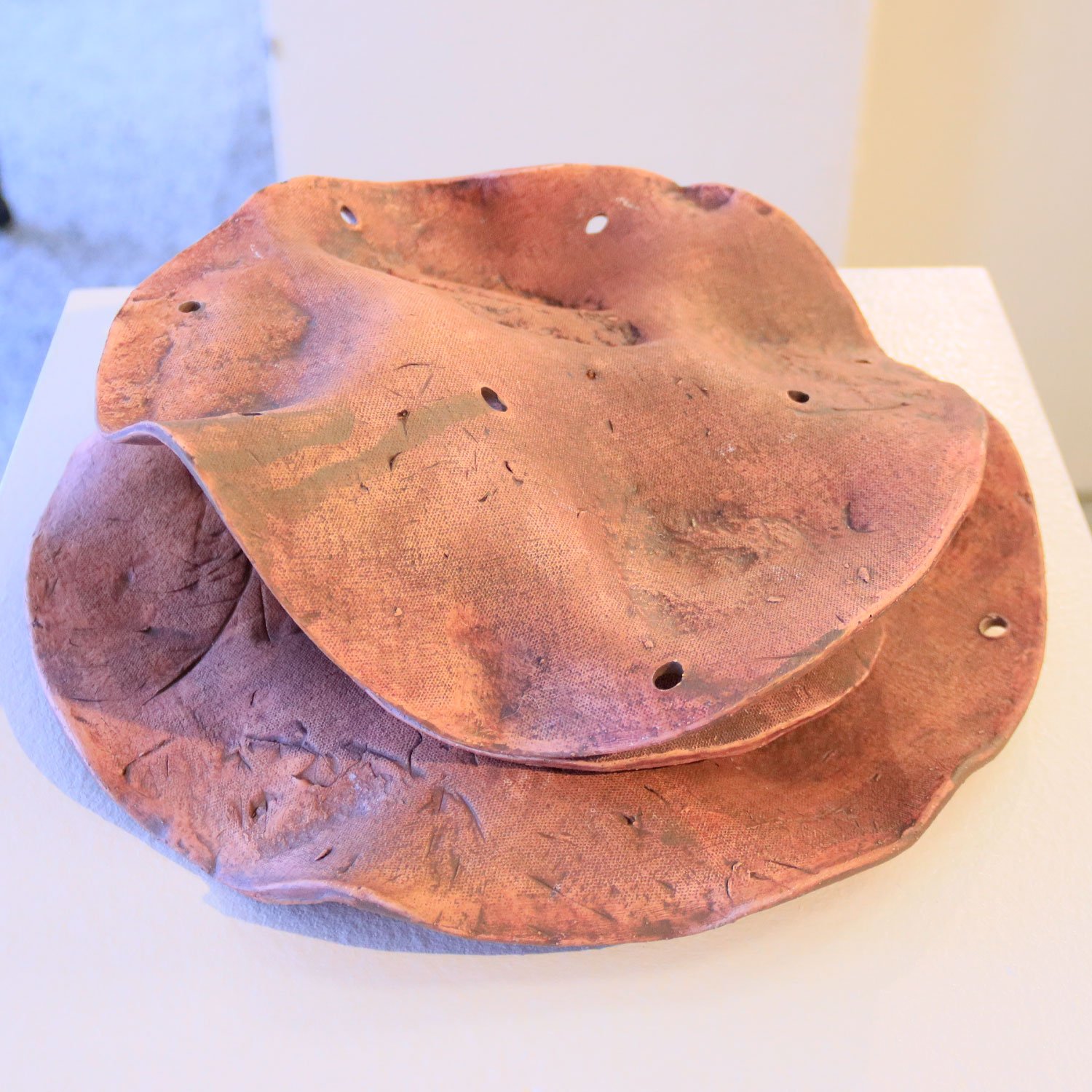January 31 Workshop invites participants to think creatively about what they usually throw away
The profound way in which modern technologies have changed our world comes into focus when we realize that virtually nothing we currently use, wear or consume every day would be possible even a century ago. Since the first polymer-based plastic was invented in 1907, the promise of “better living through chemistry” has transformed every aspect of the planet we live on.
But what becomes of all that “stuff” after we’re done using it? That’s the question explored in a workshop, “Trash Mash Popup: Plastic bags, diapers, and keyboards, Oh, my!”, to be held on Wednesday, January 31, 11:00 am – 1:00 pm at the Lake Region Arts Council Gallery, located in the historic River Inn in Fergus Falls, Minnesota. The event will be directed by artists Dar Eckert and Kristi Swee Kuder as a complement to their collaborative exhibition, “Flux,” currently on display in the gallery through March 14.
Kristi Swee Kuder
Dar Eckert
Participants will transform cleaned refuse into offbeat sculptures to add to the “Rejectamenta Stream” as part of the Flux installation. Working with an assortment of clean diapers, plastic bags, water bottles, straws, cardboard, and who knows what, you’ll cut, drill, stitch, wire, and glue to create unique detritus to add to the stream. Bring your imagination and a sense of play.
The “Aesthetics of the Discarded”
According to Eckert, the workshop invites participants to engage in “deep thought about the environment.” Eckert commented, “We don’t consider the impact of artificial materials like plastics, which are piling up everywhere with no good way to eliminate them.”
According to National Geographic, the average American produces five pounds of trash per day. Worldwide, 3.5 million tons of trash is generated daily. This all adds up to 2 billion tons of waste in municipal landfills and the environment each year.
Swee Kuder added, “It’s interesting to look at how little notice of we take of all the stuff that come and go in our daily lives, how briefly they’re used and how unaware we are of what happens to them after we discard them.”
During the workshop, participants will use disposable materials like chunks of Styrofoam, packing materials, plastic utensils, and other typically single-use items to create objects of art that will be incorporated into the installation on display. While these materials, as well as tools to transform them, will be available at the workshop, participants are welcome to bring their own “trash-to-treasure” elements to use in their creation.
Collaboration Around Shared Perspectives
The exhibit and workshop are the first collaboration between Eckert and Swee Kuder, who met through Art of the Lakes, a regional visual arts organization in Battle Lake, Minnesota. While Eckert is primarily a sculptor and raku-fired ceramic artist and Swee Kuder works with fibers and metallic elements, both share a deep interest in the way art creates a space around which ideas and issues can be explored.
“The natural world is part of me,” Eckert commented. Coming from a rural background and with a 30-year career in environmental civil engineering in her biography, she was excited by the opportunity to blend her style with Swee Kuder’s in the exhibit. “We each came in with our own ideas and worked through how to combine them in a way that works,” she explained.
Similarly, Swee Kuder finds inspiration in the synergies and contradictions of everyday life. As she notes in her artist’s vision statement, “Ambiguous situations intrigue me. How do people comprehend and relate to contradictory, uncertain or illogical aspects of life?”
Artistic Vision Meets Real World Concerns
Such contradictions are at the heart of the “Flux” installation and will be explored in the workshop. The installation depicts the integration of man-made elements into the natural world, such as a tree whose “leaves” are actually plastic hair rollers, and a spider’s web made from wire. The combination is a metaphor for how artificial elements have more permanence than those who created them.
“The exhibit shows how trash can be pretty or even make you laugh,” Swee Kuder said. “Yet we also know that what entertains us, like a set of plastic blocks, will be here long after the children who play with them are gone.”
It’s a point worth contemplating. Unlike organic materials, plastics don’t decompose; even after hundreds of years, the materials produced today will remain in the environment. And there’s a LOT of it; according to americanoceans.org, 380 million tons of plastics are produced each year, joining all the plastics that have already been created – an estimated 9 billion tons since 1950, when consumer plastics were widely introduced.
“The reality is, our trash will outlast us,” Swee Kuder said. “We need the plastics and other technological advances that make our modern life possible, yet how we have been using them is short-sighted.
“Instead of single use and discard, we need to think of these materials cyclically: rebuild, refashion, reuse,” she added.
Creating Art, Spurring Ideas
Eckert and Swee Kuder have designed the workshop as a fun process to look at trash from an imaginative and creative perspective, an exercise in reimagining how trash can become something else. If it spurs conversation and ideation around the environmental issues posed by trash, so much the better.
“The message is already out there about recycling,” said Swee Kuder. “Through this workshop, we’re trying to stimulate creative thinking, trigger ideas for different ways to use everyday disposables, rather than automatically throwing them away.”
The workshop is free and open to the public. For more information, contact the Lake Region Arts Council at (888) 735-9622.
